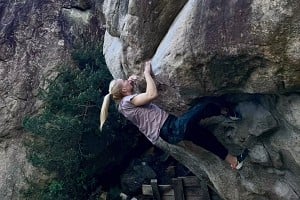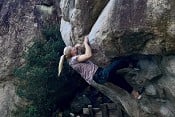In reply to Anonymous:
The other "system" for climbing as a three is to take three ropes. Each climber ties into the ends of two ropes such that a ring is formed. (Makes sense if you draw it out on paper.) So climber #1 is attached to ropes a & c; climber #2 is attached to ropes a & b; climber #3 is attached to ropes b & c.
Climber #1 leads first pitch, belays, brings up climber #2 and then climber #3. At this point, the ropes of climber #3 are correctly laid out for them to lead. Climber #3 now leads the next pitch. Repeat.
Advantages: everyone gets their share of leading; everyone is attached to two ropes; the climber not actively involved in belaying (the middle man) can be sorting
Disadvantages: more kit; needs good teamwork; slightly slower - though this can be minimised.
Bob









